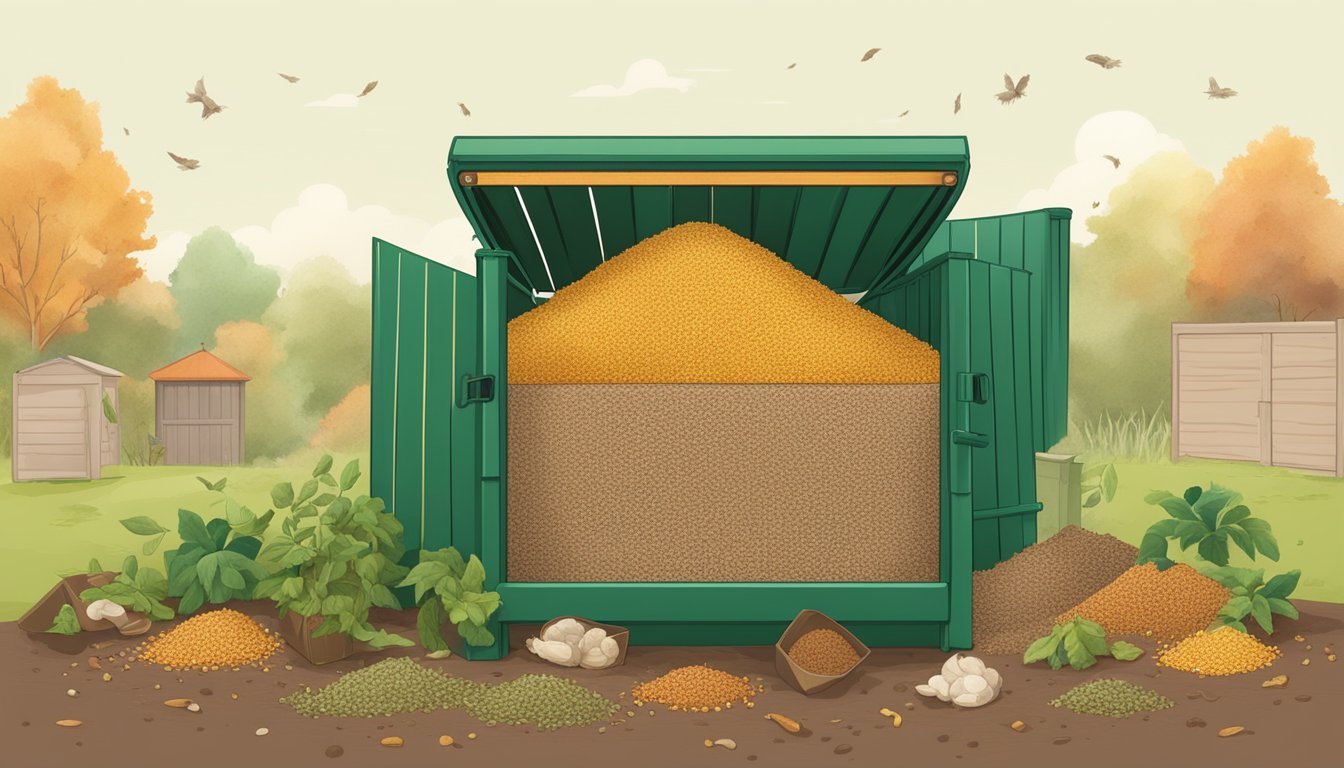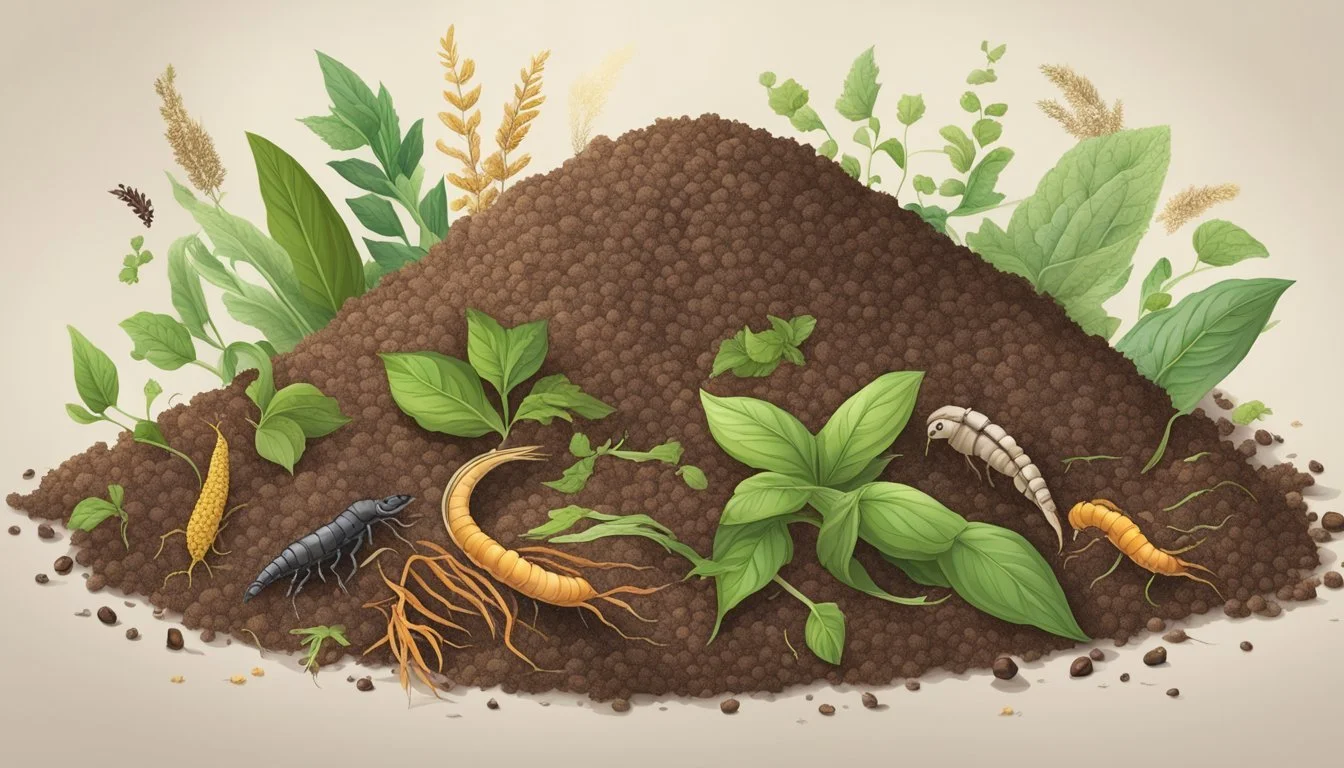Can You Compost Quinoa?
Understanding Its Impact on Your Compost Pile
Quinoa, (What wine goes well with quinoa?) often hailed as a superfood for its high protein content and essential nutrients, is not just beneficial for human health but also for the health of our environment when added to a compost pile. Composting is a natural process that converts organic matter like food scraps and yard waste into nutrient-rich soil, which can greatly reduce household waste. Organic matter decomposes in the presence of oxygen and water, providing a more sustainable way of discarding leftovers like quinoa, while simultaneously creating a valuable product for gardening.
Including quinoa in your compost mix contributes positively to the composting process due to its nutrient-rich profile. Whether it's cooked or raw, quinoa can break down effectively in a compost bin or pile. It is, however, generally recommended to compost cooked quinoa (how long does cooked quinoa last?) over raw, as it decomposes more readily. This doesn't just minimize waste but also ensures a return of this nutritious grain to the soil, closing a natural loop while enhancing soil quality.
In the practice of composting, paying attention to what goes into the compost bin is crucial. Successful composting requires a balanced mixture of 'greens', which provide nitrogen, and 'browns', which supply carbon. Quinoa qualifies as a green component and must be combined with the right ratio of browns like dry leaves or twigs to facilitate proper decomposition. This balance helps to maintain an effective composting environment, minimizing odors, and expediting the breakdown of organic materials into a rich compost that can support plant growth and contribute to a healthier environment.
Understanding Compost
Composting is the process of recycling decomposed organic materials into a rich soil amendment known as compost. By understanding how to create and maintain a compost pile, you can transform your kitchen scraps and yard waste into nutrient-rich fertilizer, contributing to environmental sustainability.
The Basics of Composting
Composting is an aerobic method meaning it requires oxygen to decompose organic waste. Key components for successful composting include a balance of 'greens' (nitrogen-rich materials) and 'browns' (carbon-rich materials), moisture, temperature, and aeration.
Benefits of Composting
Composting reduces waste destined for landfills and mitigates the release of methane gas emissions. It also produces a nutrient-rich soil amendment, improving soil structure, moisture retention, and providing plants with essential nutrients.
Common Composting Methods
There are several composting methods including backyard composting, a simple and accessible method for many homeowners. Hot composting speeds up the decomposition process through higher temperatures. Vermicomposting uses worms to break down organic matter and is suitable for indoor composting.
Composting Challenges
One may encounter challenges such as pests, odor, or an imbalance in the compost pile. To prevent pests and foul odor, maintain a good balance of greens and browns and ensure proper aeration and moisture levels. Exclude meat, oils, and dairy from the pile to prevent attracting pests and producing unpleasant smells.
Composting Materials
Common materials appropriate for composting include leaves, paper, sticks, sawdust, dryer lint, tea bags, and eggshells. Food scraps like cooked quinoa can also be composted, provided they're not mixed with incompatible materials like meats or excessive oils.
Factors Affecting Decomposition
The decomposition rate in a compost pile is influenced by factors such as temperature, moisture, oxygen (aeration), and the ratio of carbon to nitrogen. Microorganisms require all these factors to effectively break down organic matter.
Compost Pile Maintenance
Regular maintenance of a compost pile involves watering to maintain moisture and turning to provide aeration. This ensures that microorganisms have the oxygen they need to efficiently decompose the material in the pile.
Quinoa's Place in Compost
Quinoa, as a nutrient-rich seed, can significantly contribute to the composting process. This section delves into the specifics of why and how quinoa can be composted effectively.
Properties of Quinoa
Quinoa is recognized for being a gluten-free seed with a complex nutritional profile, high in protein and all nine essential amino acids. It contains saponins, natural compounds that can be removed by rinsing before cooking—which is important to consider when composting quinoa.
Benefits of Composting Quinoa
In compost, quinoa acts as a green material rich in nitrogen, which enhances the nutrient content of compost. The presence of essential nutrients and amino acids in quinoa aids in feeding the microorganisms responsible for decomposing organic matter, thus creating nutrient-rich soil that benefits garden health.
Potential Issues with Quinoa in Compost
If not prepped correctly, quinoa may cause issues in your compost pile. Uncooked quinoa has the potential to sprout, which could lead to unwanted plant growth in the compost. Additionally, since it's a high-protein food, decomposing quinoa could emit a foul odor and attract pests if not balanced properly with brown compost materials.
Preparation of Quinoa for Composting
Before adding quinoa to compost, it’s best to use cooked quinoa, ensuring that any saponins are removed by thoroughly rinsing and soaking. This prevents the possibility of saponins inhibiting microbial growth. Once prepared, the quinoa should be mixed well with dry, carbon-rich materials to facilitate proper decomposing. Regular turning of the compost pile is recommended to maintain a balanced, odor-free decomposition process.
Composting Alternatives for Quinoa
When exploring composting alternatives for quinoa, there are several methods that can help gardeners recycle this nutritious grain. From mulching to vermicomposting, these approaches allow for efficient quinoa breakdown, enriching the soil while encouraging sustainable gardening practices.
Direct Application as Mulch
Quinoa, when used directly as mulch, can benefit the garden bed by conserving moisture and suppressing weeds. The grains can be scattered around plants, acting as a protective layer. As quinoa slowly decomposes, it releases nutrients that are readily absorbed by plant roots.
Using Quinoa in Vermicomposting
In vermicomposting, quinoa can serve as a valuable source of food for worms. The addition of quinoa to a worm bin introduces a nitrogen-rich organic material that worms readily consume. This process not only recycles food waste but also produces a highly nutritious compost, perfect for enriching garden soils.
Creating a Balanced Diet for Microorganisms
A successful compost pile requires a balance between nitrogen and carbon materials. Quinoa, which is nitrogen-rich, should be mixed with carbon-rich materials like dry leaves or paper to maintain this balance. This practice ensures that microorganisms have the optimal environment to break down the organic material efficiently, avoiding issues like odor or slow decomposition.
Integrating Quinoa with Other Compostable Materials
Quinoa can enhance compost balance by contributing nitrogen, vital for microorganism growth responsible for decomposition. Its high protein content serves as an excellent energy source for these microorganisms.
Composting Quinoa with Kitchen Scraps
When adding quinoa to compost, it works best with a variety of kitchen scraps such as fruit and veggie scraps, coffee grounds, and eggshells. These materials break down and interact to create a diverse and nutrient-dense compost pile. It is important to ensure that quinoa is fully cooked to speed up its decomposition and avoid attracting pests.
Fruit & Veggie Scraps: Supply necessary moisture and nitrogen.
Coffee Grounds: Provide nitrogen and a pleasant smell, reducing odor issues.
Eggshells: Add calcium, contributing to the overall nutrient content.
Creating Layers in Compost Pile
Establishing an effective compost pile involves creating layers of 'greens' and 'browns':
Greens: Kitchen scraps, quinoa, and grass clippings deliver moisture and nitrogen.
Browns: These are materials such as dry leaves, straw, or cardboard that contribute carbon and help maintain aeration in the compost pile.
Alternating these layers ensures a balanced environment that fosters decomposing microorganisms and minimizes odor.
Maintaining Compost Health with Quinoa
Quinoa, when used as part of a balanced compost mixture, assists in maintaining compost health. It is crucial to:
Balance: Combine quinoa with other compost materials to create a healthy ratio of greens to browns.
Water: Keep the compost moist, but not overly wet, to encourage breakdown.
Oxygen: Turn the heap regularly to provide oxygen, aiding microorganism activity and promoting efficient decomposition.
Correctly integrating quinoa can substantially increase the quality and fertility of the resulting compost.
Safety Considerations
When composting quinoa, it's crucial to manage the process properly to prevent pests and odors, manage the presence of weeds and quinoa seeds, and understand how to handle non-compostable quinoa products.
Preventing Pests and Odor
Composting quinoa can attract pests like rodents and insects if not managed correctly. To avoid this:
Enclose Compost: Use a bin with a lid to contain the compost and prevent pest access.
Balanced Composition: Maintain a good balance of browns (carbon-rich materials) and greens (nitrogen-rich materials) to reduce odors that attract pests.
Managing Weeds and Seeds
Quinoa seeds in the compost could lead to unwanted growth:
Temperature Control: Ensure your compost pile reaches 131-170°F to kill off weed seeds.
Turn Compost Regularly: This helps maintain the necessary heat and prevents the germination of any viable quinoa seeds.
Dealing with Non-Compostable Quinoa Products
Not all quinoa products should be composted:
Quinoa Flour: (how long does quinoa flour last?) If mixed with oils or preservatives, avoid composting as they can disrupt the composting process.
Packaging: Remove quinoa from any non-compostable packaging prior to composting. Only compost quinoa that is free from contaminants.
Practical Tips for Composting Quinoa
Successfully composting quinoa involves understanding the right balance of materials to add to your compost pile. The addition of quinoa should be measured and intentional to maintain the delicate balance of greens and browns necessary for efficient decomposition.
Determining the Right Amount of Quinoa
In any compost pile, maintaining the proper ratio of nitrogen-rich "green" materials, like quinoa, to carbon-rich "brown" materials is crucial. Quinoa, being a green material, adds necessary nitrogen to the compost, but it should not overwhelm the overall balance. As a general guideline, strive for a ratio of approximately two parts browns to one part greens.
Green Materials (Nitrogen-rich)
Quinoa
Vegetable scraps
Coffee grounds
Brown Materials (Carbon-rich)
Dry leaves
Twigs
Cardboard
One should add quinoa in moderation to the compost pile, particularly if it's cooked, as grains can attract pests. It is advisable to add small amounts at a time and to break it into smaller pieces to hasten decomposition. Cover quinoa with a layer of browns to both disguise the scent and facilitate the composting process.
Frequently Asked Questions
When adding quinoa to a compost pile, it's important for individuals to know that quinoa, whether cooked or uncooked, is a nutrient-rich addition that can improve soil quality. However, proper methods should be followed to avoid issues like foul odors, which could indicate a problem with the composting process.
Coping with Common Composting Quinoa Issues
Composting quinoa can sometimes lead to issues such as foul odors, which are often signs of anaerobic conditions. To prevent smelly compost, one should ensure that quinoa is mixed thoroughly with brown compost materials, such as dry leaves and newspaper, to balance moisture and improve air flow. Furthermore, turning the compost regularly allows for quicker and more efficient decomposition, minimizing the chance of unpleasant smells. If a foul odor persists, more brown materials should be added and the pile should be turned more frequently to restore a healthy balance.
Maximizing the Benefits of Composted Quinoa
Quinoa is a nutrient-rich addition to compost that can create a highly nutritious soil ideal for gardening and fertilizing. For best results, one should add soaked cooked quinoa to the compost to accelerate decomposition. It is vital to maintain a balanced mix of green materials, like vegetable scraps, with brown materials, such as fallen leaves, to ensure a rich compost outcome. Regular mixing or turning of the compost is recommended to evenly distribute the quinoa and facilitate its breakdown, leading to a prolific compost that enriches soil with essential nutrients.






